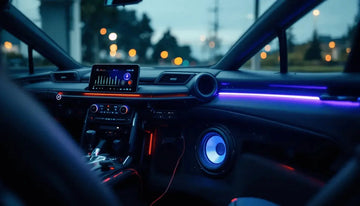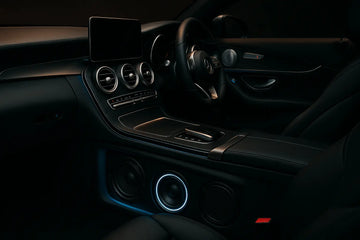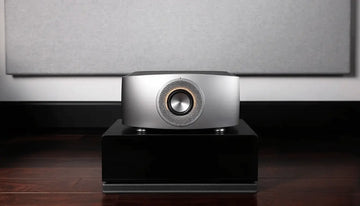Most factory-installed car audio systems deliver mediocre sound quality that fails to create the immersive listening experience drivers expect from their daily commute or weekend road trips. Whether you’re a music enthusiast who craves crystal clear sound reproduction or simply want to improve your vehicle’s audio for podcasts and phone calls, upgrading your car’s loudspeakers represents one of the most impactful modifications you can make to enhance your driving experience.
This comprehensive guide will explore everything you need to know about loudspeakers for cars, from understanding different speaker types and technical specifications to choosing the right products for your vehicle and budget. You’ll discover how modern speaker technology delivers superior sound quality compared to standard OEM equipment, learn about popular brands and their signature series, and find practical tips for installation and system optimization.
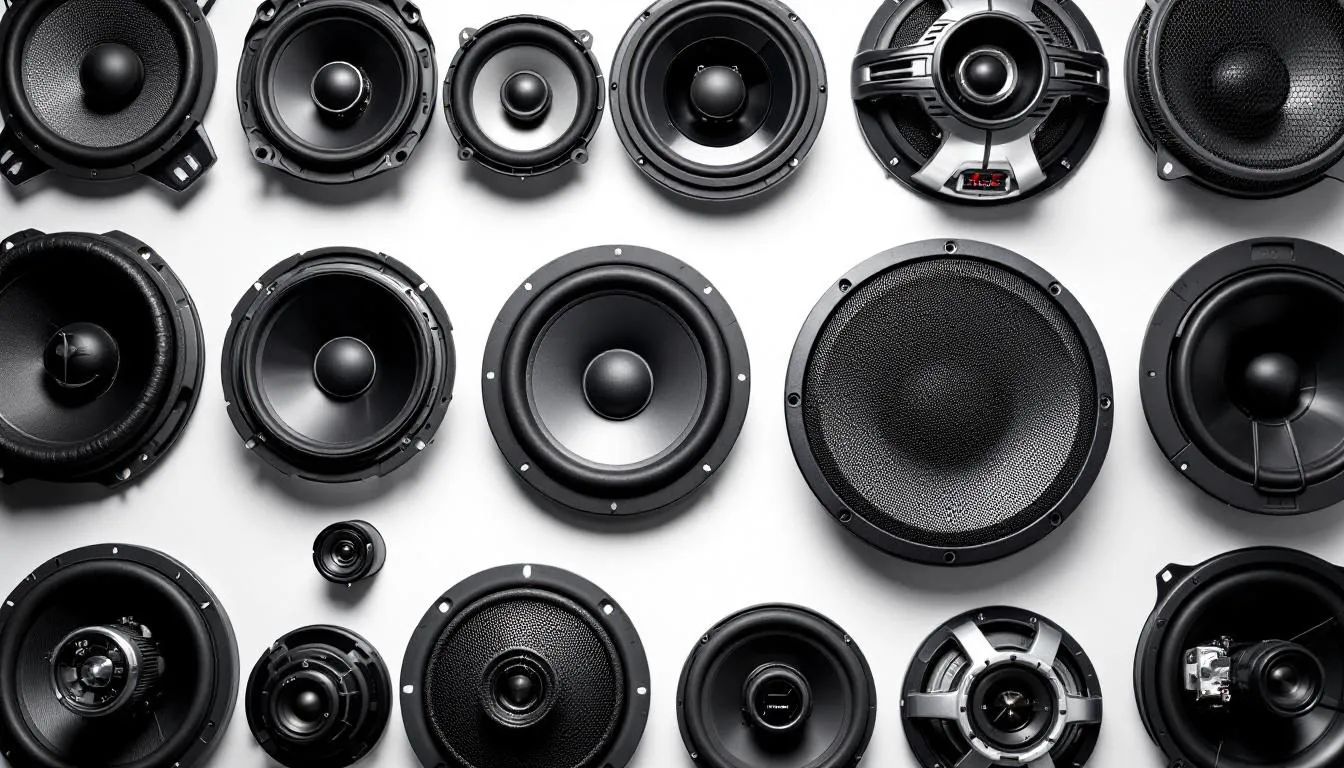
What Are Car Loudspeakers and Why Upgrade?
Car loudspeakers are specialized audio drivers engineered specifically for automotive environments, designed to replace the factory-installed speakers that come standard with most vehicles. These aftermarket speakers are built to withstand the unique challenges of automotive installation, including temperature extremes, humidity, vibration, and the acoustically challenging environment of vehicle interiors.
The primary motivation for upgrading lies in the significant improvement in sound quality and listening experience that aftermarket speakers provide. Factory speakers are typically designed to meet minimum cost requirements rather than deliver exceptional audio performance. Manufacturers often use inexpensive materials like paper cones, basic magnets, and simple crossover networks that prioritize durability and low cost over high quality sound reproduction.
Aftermarket loudspeakers for cars deliver several immediate benefits that transform your vehicle’s audio system. First, they provide dramatically improved frequency response, allowing you to hear musical details and nuances that factory speakers simply cannot reproduce. This enhanced clarity makes every style of music more enjoyable, from the deep bass lines in hip-hop to the delicate high-frequency details in classical recordings.
Power handling represents another significant upgrade advantage. While factory speakers might handle 15-30 watts RMS, quality aftermarket speakers often manage 50-200 watts or more, allowing for much louder, cleaner sound without distortion. This increased power handling means you can drive your speakers harder without the harsh clipping and breakup that occurs when factory speakers reach their limits.
The investment in quality car speakers also increases your vehicle’s resale value by creating a premium audio experience that appeals to potential buyers. Modern drivers expect superior sound quality from their vehicles, and a well-executed speaker upgrade demonstrates attention to detail and quality that extends beyond basic transportation needs.
Most importantly, upgrading your loudspeakers transforms every drive into a more enjoyable experience. Whether you’re listening to your favorite music during your daily commute, following along with podcasts on long road trips, or taking hands-free phone calls, crystal clear sound reproduction makes these activities more pleasant and engaging.
Types of Car Speakers
Understanding the different types of car speakers available helps you make informed decisions about which products best fit your needs, installation preferences, and performance expectations. Each speaker type offers distinct advantages and serves specific roles in creating optimal automotive audio systems.
Coaxial Speakers
Coaxial speakers, also called full-range speakers, combine multiple driver types into a single assembly, typically featuring a woofer for bass and midrange frequencies with a tweeter mounted concentrically on the woofer’s pole piece. This design approach offers the most straightforward upgrade path for most vehicles since coaxial speakers fit directly into factory speaker locations without requiring additional mounting hardware or complex installation procedures.
The primary advantage of coaxial speakers lies in their simplicity and ease of installation. Most aftermarket coaxial speakers are designed as direct drop-in replacements for factory speakers, meaning you can complete the upgrade using basic tools in your driveway or garage. This makes coaxial speakers ideal for DIY enthusiasts who want better sound quality without the complexity of component systems.
Modern coaxial speakers deliver impressive performance improvements over factory equipment. Quality coaxial designs feature polypropylene or composite woofer cones that resist moisture and temperature extremes, silk or aluminum dome tweeters for smooth high-frequency response, and carefully tuned crossover networks that optimize the frequency distribution between drivers. Many coaxial speakers also include multiple tweeters or super tweeters to extend high-frequency response and improve dispersion patterns.
Component Speakers
Component speakers separate the woofer, tweeter, and crossover network into distinct units that can be installed in optimal locations throughout your vehicle. This separation allows for superior sound staging and imaging since you can position tweeters at ear level while installing woofers in door panels or kick panels.
The performance advantages of component systems are substantial. By separating the drivers, engineers can optimize each component for its specific frequency range without the compromises inherent in coaxial designs. Woofers can be larger and feature longer excursion capabilities for improved bass response, while tweeters can utilize premium materials like silk, aluminum, or even beryllium for extended frequency response and lower distortion.
Component systems typically include external crossover networks that provide more precise frequency division and often feature adjustable settings for tweeter level and crossover points. This flexibility allows you to fine-tune the system’s sound to compensate for your vehicle’s acoustic characteristics and personal preferences.
The trade-off for component systems’ superior performance is increased installation complexity. Mounting separate tweeters often requires custom fabrication or the use of mounting hardware, and running additional wiring to multiple locations adds time and effort to the installation process. However, for serious audio enthusiasts, the performance benefits justify the additional installation requirements.
Subwoofers
Subwoofers specialize in reproducing the lowest frequencies in the audio spectrum, typically handling bass content below 80-120 Hz. These dedicated low-frequency drivers are essential for reproducing the deep bass that smaller full-range speakers simply cannot generate due to physical limitations.
Automotive subwoofers range from compact 8-inch models designed for tight spaces to massive 15-inch or larger drivers for maximum output. The key to subwoofer performance lies in the combination of driver design and enclosure tuning. Subwoofers require carefully designed enclosures to perform properly, whether sealed enclosures for tight, accurate bass or ported designs for maximum output and efficiency.
Quality subwoofers transform your music listening experience by adding the foundation that makes bass-heavy music genres like electronic, hip-hop, and rock sound complete and impactful. Even acoustic music benefits from proper subwoofer integration, as the lowest notes from pianos, organs, and upright bass instruments gain proper weight and presence.
Modern subwoofer technology includes features like dual voice coils for flexible wiring options, advanced motor structures for improved control and reduced distortion, and robust construction techniques that handle hundreds of watts of power while maintaining reliability in automotive environments.
Marine-Certified Speakers
Marine-certified speakers utilize weather-resistant construction techniques and materials specifically designed to withstand moisture, salt exposure, and temperature extremes. While originally developed for boat applications, these speakers excel in convertibles, motorcycles, and any vehicle where speakers might be exposed to harsh environmental conditions.
Marine speakers typically feature UV-resistant surrounds, sealed motor structures, and corrosion-resistant hardware that maintains performance and appearance even after extended exposure to moisture and sunlight. Many marine speakers also incorporate drainage systems that prevent water accumulation in the motor structure.
The performance of marine speakers has improved dramatically in recent years. Premium marine speakers now deliver sound quality that rivals traditional automotive speakers while maintaining their weather-resistant properties. This makes them attractive options for drivers who want the flexibility to enjoy their audio system with the top down or in challenging weather conditions.
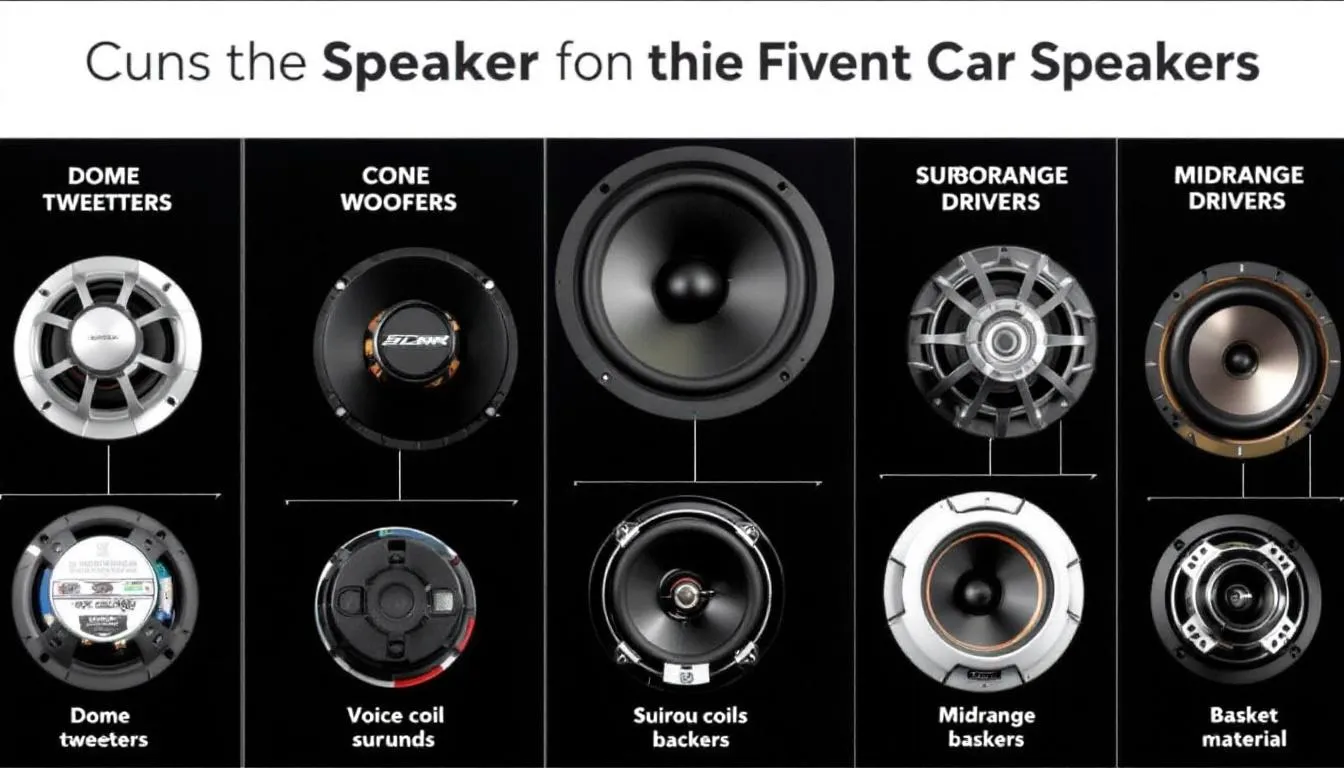
Key Specifications to Consider
Understanding technical specifications helps you select speakers that match your system requirements and performance expectations. While marketing materials often emphasize peak power ratings and frequency extremes, the most important specifications for real-world performance are often overlooked or understated.
Speaker Size Compatibility
The most fundamental specification is physical size compatibility with your vehicle’s existing speaker openings. Common automotive speaker sizes include 6.5-inch, 6x9-inch, 5.25-inch, and 4-inch configurations, though many vehicles use unique sizes that require careful measurement before purchasing replacements.
Measuring your existing speakers accurately is crucial since even small dimensional differences can prevent proper installation. Measure both the overall diameter and the mounting depth to ensure new speakers will fit without modifications to your vehicle’s interior panels or door cards. Many modern vehicles integrate speakers into complex mounting systems that limit your size options.
Consider that larger speakers generally produce more bass and handle more power than smaller designs, but only if your vehicle’s installation location can accommodate the increased size. Sometimes upgrading to the largest speaker that fits your mounting location provides significant performance improvements without requiring additional modifications.
Power Handling Specifications
Power handling ratings indicate how much electrical power a speaker can safely process without incurring damage. The most important specification is RMS (Root Mean Square) power handling, which represents the continuous power level the speaker can handle during normal operation. Peak power ratings are less meaningful since they represent brief transient capabilities rather than sustained operation limits.
For most listening applications, speakers rated for 50-75 watts RMS provide adequate power handling for moderate volume levels and deliver clean, undistorted sound. If you plan to install a high-power amplifier or frequently listen at loud volumes, look for speakers rated at 100 watts RMS or higher. Remember that speakers with higher power handling often feature more robust construction and better materials, which can improve sound quality even at moderate power levels.
The relationship between amplifier power and speaker power handling is important to understand. Using an amplifier that produces less power than the speaker’s rating is perfectly safe and often results in better sound quality than using an amplifier that matches or exceeds the speaker’s power handling. Underpowered speakers typically sound better than overpowered speakers since distortion increases dramatically when speakers are driven beyond their design limits.
Sensitivity Ratings
Sensitivity ratings, measured in decibels (dB), indicate how efficiently a speaker converts electrical power into acoustic output. Higher sensitivity ratings mean the speaker produces more sound with less amplifier power, which is particularly important in automotive applications where amplifier power is often limited.
Speakers with sensitivity ratings above 90 dB are considered highly efficient and work well with modest amplifier power. These efficient speakers are ideal for factory head unit installations or low-power aftermarket amplifiers. Speakers with sensitivity ratings below 87 dB typically require more amplifier power to reach satisfying volume levels but often deliver better sound quality due to their more robust construction.
Understanding sensitivity becomes crucial when planning system upgrades. If you’re replacing factory speakers without adding an external amplifier, choose speakers with sensitivity ratings of 90 dB or higher to ensure adequate volume levels. If you plan to add amplification later, you can select speakers based on sound quality rather than efficiency alone.
Frequency Response Range
Frequency response specifications, measured in Hertz (Hz), indicate the range of frequencies a speaker can reproduce. Human hearing typically extends from 20 Hz to 20,000 Hz (20 kHz), though most people lose some high-frequency sensitivity with age and exposure to loud sounds.
Quality car speakers typically reproduce frequencies from around 50-60 Hz up to 20 kHz or beyond. Speakers that extend lower in frequency provide better bass response, while those that extend higher provide more detailed treble reproduction. However, frequency response specifications can be misleading since they often don’t indicate how evenly the speaker reproduces different frequencies within its stated range.
More important than the absolute frequency extremes is how smoothly the speaker responds across its operating range. A speaker that reproduces 60 Hz to 18 kHz with smooth, even response will sound better than one that claims 40 Hz to 25 kHz response but has significant peaks and dips in its frequency curve. Unfortunately, this information is rarely included in basic specifications and requires consulting detailed measurement data or professional reviews.
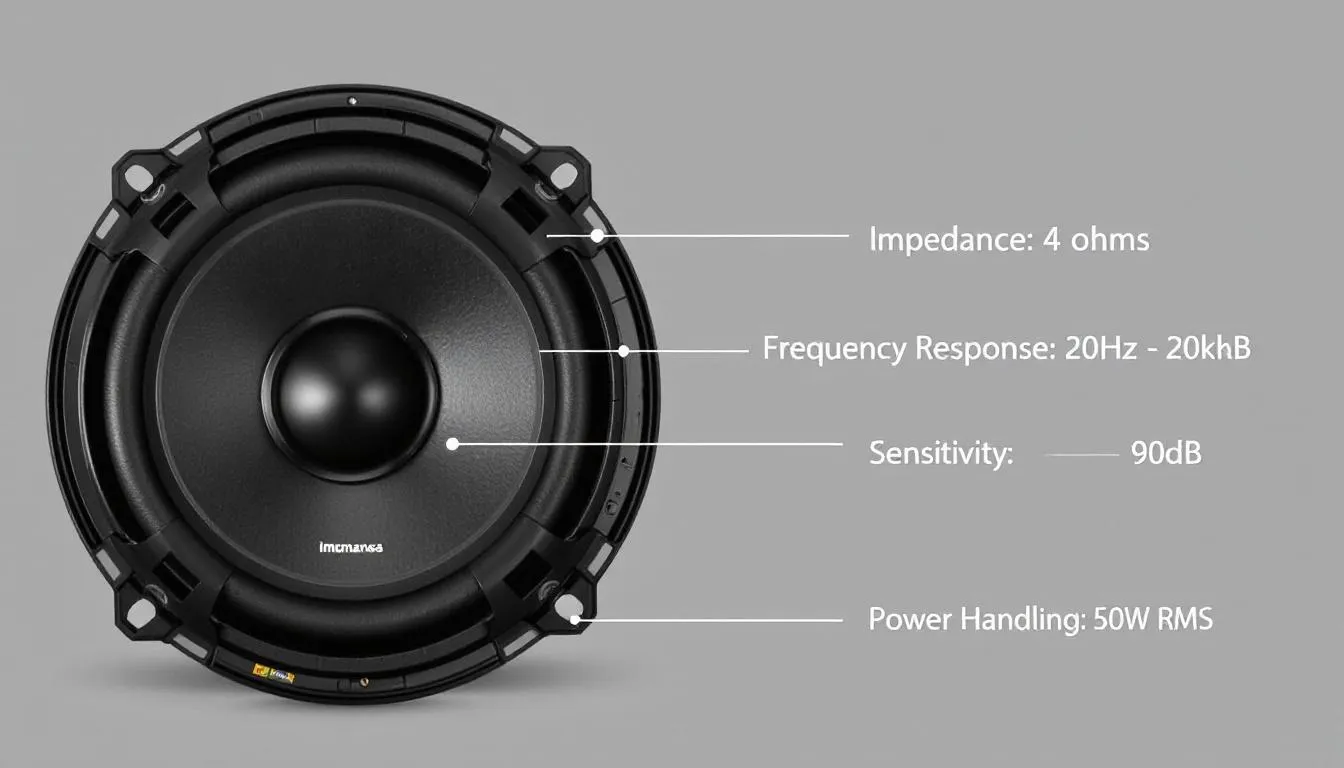
Popular Car Speaker Brands and Series
The car audio market features numerous manufacturers offering products across all price ranges and performance levels. Understanding the strengths and focus areas of major brands helps narrow your choices and ensures you select speakers that match your priorities and budget.
Pioneer Audio Systems
Pioneer has established itself as a leading manufacturer in automotive audio through decades of innovation and consistent product development. The company offers several speaker series designed for different user needs and budget levels, each incorporating specific technologies and design philosophies.
The Pioneer A-Series represents the company’s entry-level offering, designed to provide significant upgrades over factory speakers without requiring substantial investment. A-Series speakers feature polypropylene woofer cones for moisture resistance and durability, balanced dome tweeters for smooth high-frequency response, and carefully tuned crossover networks optimized for automotive installation. These speakers deliver improved dynamic range and clearer sound reproduction compared to typical factory equipment while maintaining easy installation and competitive pricing.
Pioneer’s D-Series speakers target music enthusiasts who demand more precision and power from their audio systems. D-Series products incorporate advanced materials like carbon and aramid fiber woofer cones that provide increased rigidity and reduced breakup compared to basic polypropylene designs. The series features enhanced motor structures with larger magnets and longer voice coils for improved power handling and dynamic response. D-Series speakers are engineered to reproduce music with greater accuracy and detail, making them popular among drivers who prioritize sound quality over basic functionality.
The flagship Z-Series represents Pioneer’s premium offering for discerning audiophiles who demand reference-quality sound reproduction in their vehicles. Z-Series speakers utilize exotic materials like beryllium dome tweeters, carbon fiber woofer cones, and advanced crossover networks with high-quality components. These speakers are designed to compete with high-end home audio products while maintaining the durability required for automotive installation. The Z-Series demonstrates Pioneer’s commitment to pushing the boundaries of automotive audio performance.
Polk Audio Speaker Solutions
Polk Audio has built a reputation for engineering speakers that deliver exceptional performance in challenging environments, making their products particularly well-suited for automotive applications. The company’s automotive speaker lines emphasize durability, weather resistance, and consistent performance across varying conditions.
The Polk DB+ Series focuses on all-weather performance, making these speakers suitable for cars, boats, and motorcycles. DB+ speakers feature marine-certified construction with UV-resistant surrounds, sealed motor structures, and corrosion-resistant hardware that maintains performance even after exposure to moisture and extreme temperatures. Despite their weather-resistant construction, DB+ speakers deliver sound quality that rivals conventional automotive speakers, proving that durability doesn’t require compromising audio performance.
Polk’s MM1 Series takes marine certification to the next level with Ultra-Marine Certified IP56 ratings that provide protection against water ingress and dust contamination. These speakers incorporate Polk’s proprietary Dynamic Balance technology, which uses laser interferometry to identify and eliminate resonances that color sound reproduction. The MM1 Series delivers studio monitor accuracy in a package designed to withstand the harshest environmental conditions, making them ideal for serious audiophiles who refuse to compromise on either sound quality or durability.
Rockford Fosgate Audio Technology
Rockford Fosgate has earned recognition for developing complete audio solutions that integrate speakers, amplifiers, and signal processing into cohesive systems optimized for specific vehicle applications. The company’s approach emphasizes system-level thinking rather than individual component optimization.
Rockford Fosgate’s complete audio solutions often feature their innovative Punch EQ technology, which uses digital signal processing to optimize frequency response for specific vehicle acoustics. This system-level approach recognizes that speakers perform differently in various automotive environments and adjusts the signal accordingly to maintain consistent sound quality across different vehicle types.
The company’s speaker designs incorporate technologies developed for their amplifier and subwoofer products, creating synergistic systems where each component is optimized to work with the others. This integrated approach often delivers better overall performance than mixing components from different manufacturers, particularly for users who want plug-and-play solutions rather than custom-tuned systems.
Rockford Fosgate products often target the performance and customization market, with speakers designed to handle high power levels and integrate with sophisticated amplification systems. Their speaker designs typically emphasize dynamic range, impact, and the ability to reproduce music at high volume levels without distortion or fatigue.
How to Choose the Right Car Speakers
Selecting the optimal speakers for your vehicle requires balancing multiple factors including performance requirements, budget constraints, installation preferences, and compatibility with your existing system. A systematic approach helps ensure you make choices that deliver satisfying results and avoid common pitfalls that lead to disappointing outcomes.
Measuring and Compatibility Assessment
Begin by carefully measuring your existing speaker openings to determine size constraints and mounting requirements. Remove existing speakers to measure both the overall diameter and the mounting depth, paying attention to any unusual mounting hardware or integrated assemblies that might limit your options. Many modern vehicles integrate speakers into complex door panels or dashboard assemblies that constrain replacement options.
Document the existing wiring configuration, noting whether your vehicle uses standard speaker wire connections or proprietary connectors that might require adapters. Some factory systems include built-in amplification or signal processing that affects compatibility with aftermarket speakers. Understanding these system characteristics early prevents compatibility issues and helps you select appropriate replacement products.
Consider the acoustic environment where speakers will be installed. Door-mounted speakers face different challenges than dashboard or rear deck installations, with factors like interior volume, surface materials, and seating positions affecting optimal speaker characteristics. Larger vehicles often benefit from speakers with higher power handling and sensitivity ratings to fill the expanded interior volume effectively.
Listening Preferences and Usage Patterns
Assess your typical listening preferences and usage patterns to guide speaker selection. If you primarily listen to talk radio, podcasts, or acoustic music at moderate volumes, speakers optimized for midrange clarity and vocal reproduction might be more important than those emphasizing deep bass or extreme high-frequency extension. Conversely, if you enjoy bass-heavy music genres or frequently listen at high volumes, prioritize speakers with robust low-frequency capabilities and high power handling.
Consider your listening environment and typical background noise levels. Highway driving creates substantial background noise that requires speakers capable of maintaining clarity and detail even when competing with road noise, wind noise, and engine sounds. Stop-and-go city driving might emphasize different performance characteristics than long-distance highway travel.
Evaluate whether you listen primarily to compressed digital music sources like streaming services and MP3 files, or high-quality sources like CDs and lossless digital formats. Compressed sources often benefit from speakers that provide forgiving, smooth sound reproduction, while high-quality sources can reveal the superior detail and accuracy of premium speaker designs.
Budget and Performance Balance
Establish a realistic budget that considers not just speaker costs but also installation expenses and potential system upgrades. Entry-level speaker upgrades typically cost $100-300 and provide significant improvements over factory equipment. Mid-range speakers in the $300-800 range often deliver the best performance-per-dollar ratio for most users. Premium speakers costing $800 and above target serious audiophiles willing to invest in reference-quality sound reproduction.
Remember that speakers represent just one component in your audio system. Budget allocations should consider the entire signal chain from source device through amplification to speakers. Sometimes investing in amplification or source improvement delivers better overall results than purchasing expensive speakers to use with inadequate amplification.
Consider the long-term upgrade path when making speaker selections. If you plan to add amplification or subwoofers later, choose speakers that will scale well with system improvements rather than optimizing solely for current system limitations. Quality speakers often reveal their full potential only when paired with appropriate amplification and source material.
Vehicle Acoustics and Installation Factors
Evaluate your vehicle’s acoustic characteristics and how they might affect speaker performance. Vehicles with large glass areas and hard interior surfaces tend to create bright, reflective acoustic environments that benefit from speakers with smooth, non-fatiguing high-frequency response. Vehicles with soft interior materials and smaller windows might require speakers with more aggressive treble response to maintain clarity and detail.
Consider seating positions and how speaker placement affects the listening experience for driver versus passengers. If you primarily drive alone, optimize speaker selection and positioning for the driver’s seat. If you frequently carry passengers, choose speakers and installation locations that provide more balanced sound distribution throughout the cabin.
Assess installation complexity and your comfort level with automotive modification projects. Simple coaxial speaker replacements require minimal tools and skills, while component systems often involve custom mounting, additional wiring, and interior panel modifications. Factor installation costs and complexity into your decision-making process to avoid projects that exceed your capabilities or budget.
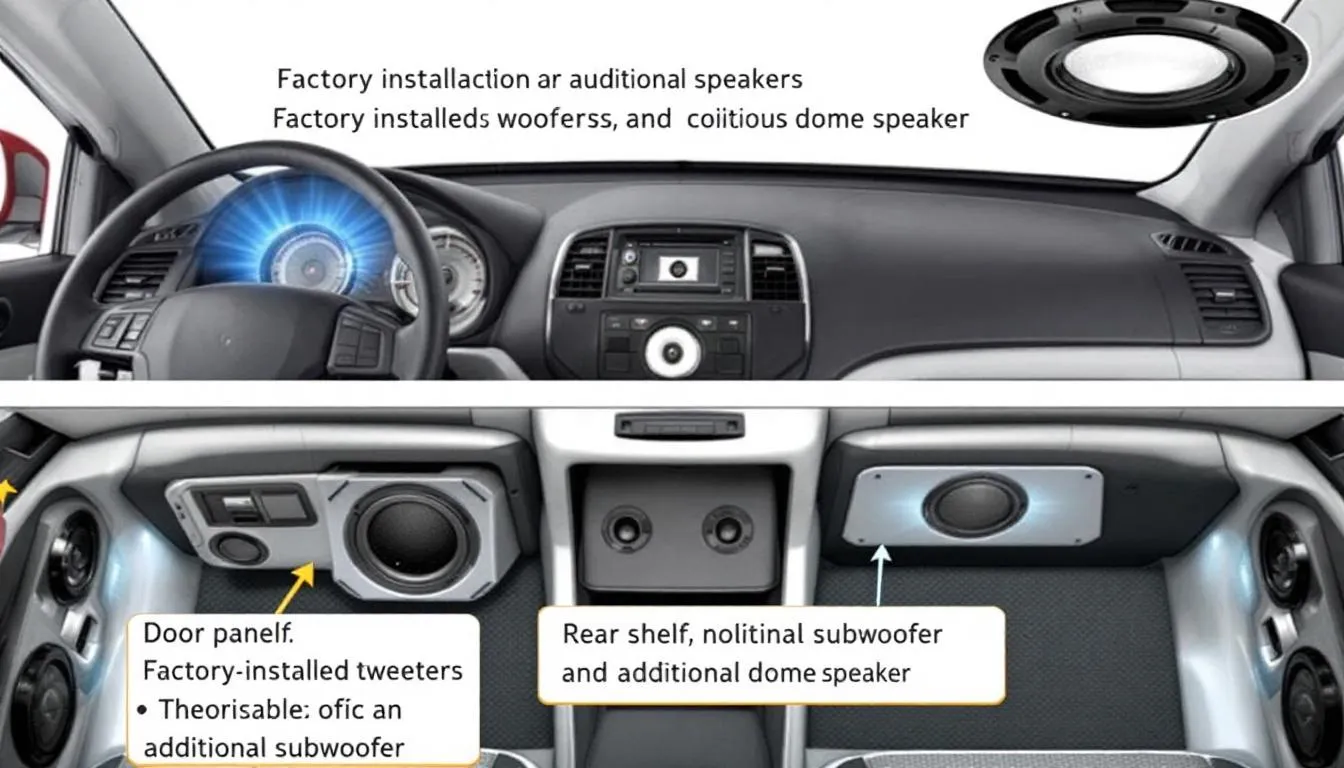
Installation Considerations
Proper installation significantly impacts speaker performance and longevity, making installation planning as important as speaker selection. Understanding installation options, requirements, and potential challenges helps ensure your upgrade project delivers the expected improvements while avoiding damage to your vehicle or new speakers.
Drop-in Installation Options
Many aftermarket speakers are designed as direct replacements for factory equipment, fitting existing mounting locations without requiring modifications to your vehicle. These drop-in installations represent the simplest upgrade path and are suitable for DIY enthusiasts with basic hand tools and modest automotive experience.
Drop-in installations typically involve removing interior panels to access existing speakers, disconnecting factory wiring, removing mounting screws or clips, and reversing the process with new speakers. Most coaxial speakers fall into this category, though some vehicles use unusual mounting systems that complicate even basic speaker replacement.
Verify compatibility before beginning installation by checking mounting depth, screw hole patterns, and connector types. Some vehicles use proprietary connectors that require adapter harnesses, while others integrate speakers into complex assemblies that make replacement difficult or impossible without extensive modifications.
Document the removal process with photos or notes to ensure proper reassembly. Interior panels often use multiple fastener types and may require specific removal sequences to avoid damage. Take your time during disassembly since rushing often leads to broken clips or scratched surfaces that are expensive to repair.
Professional Installation Benefits
Professional installation becomes advisable for complex component systems, vehicles with integrated audio systems, or installations requiring custom fabrication. Professional installers possess specialized tools, experience with specific vehicle models, and knowledge of potential complications that can save time and prevent costly mistakes.
Component speaker installations often require custom tweeter mounting, crossover installation, and additional wiring runs that challenge DIY enthusiasts. Professional installers can create clean, factory-like installations that integrate seamlessly with your vehicle’s interior while optimizing speaker positioning for best sound quality.
Professional installation also provides warranty protection for both speakers and vehicle. Reputable installers carry insurance and guarantee their work, providing peace of mind that DIY installations cannot match. This protection becomes particularly valuable for expensive speaker systems or complex vehicle modifications.
Consider professional installation if your vehicle requires interior panel removal, dashboard disassembly, or electrical modifications beyond simple speaker wire connections. The cost of professional installation often proves worthwhile when compared to the time, tools, and potential mistakes involved in complex DIY projects.
DIY Installation Guidelines
DIY speaker installation can be rewarding and cost-effective for mechanically inclined individuals willing to invest time in proper preparation and execution. Success requires gathering appropriate tools, understanding your vehicle’s construction, and following systematic procedures that minimize risk of damage.
Essential tools include panel removal tools to avoid scratching interior surfaces, appropriate screwdrivers and wrenches for mounting hardware, wire strippers and connectors for electrical connections, and a multimeter for testing connections and polarity. Vehicle-specific tools may be required for certain panel removal procedures.
Research your specific vehicle model before beginning installation. Online forums, service manuals, and installation guides often provide valuable information about panel removal procedures, hidden fasteners, and potential complications. Understanding your vehicle’s construction prevents damage and reduces installation time.
Work systematically and maintain organization throughout the installation process. Keep removed fasteners organized and labeled, take photos of connector orientations and wire routing, and test each connection before final assembly. Patience during installation prevents mistakes that can damage speakers, vehicle components, or interior trim pieces.
System Integration and Wiring
Proper electrical integration ensures speakers receive clean signals and operate within their design parameters. Understanding basic automotive electrical systems helps avoid compatibility issues and optimizes performance from your new speakers.
Verify amplifier compatibility with new speakers by checking impedance ratings and power output specifications. Most car speakers are designed for 4-ohm operation, while some home audio equipment uses 8-ohm designs. Mismatched impedances can cause amplifier damage or poor performance.
Consider signal quality and source impedance when connecting speakers to factory head units or aftermarket amplifiers. High-quality speaker wire with appropriate gauge ratings ensures minimal signal loss and optimal power transfer. Poor quality wire or inadequate gauge can limit performance and potentially damage equipment.
Pay attention to phase relationships when connecting multiple speakers. All speakers should move in the same direction when receiving positive voltage to maintain proper sound staging and avoid cancellation effects. Mark positive and negative terminals clearly and double-check all connections before energizing the system.
Maximizing Your Car Speaker Investment
Getting optimal performance from your new speakers requires attention to system integration, installation quality, and ongoing maintenance. Understanding how speakers interact with other system components helps you make additional improvements that enhance your investment and create a more satisfying listening experience.
Amplification and System Matching
Quality speakers often reveal the limitations of factory amplification, making external amplifier addition one of the most effective system upgrades. Factory head units typically produce 15-25 watts per channel, which is adequate for basic listening but insufficient to realize the full potential of quality aftermarket speakers.
Adding a quality aftermarket amplifier provides several benefits beyond increased power output. External amplifiers typically offer lower distortion, better frequency response, and superior build quality compared to integrated head unit amplification. Even modest amplifiers producing 50-75 watts per channel can dramatically improve dynamics, clarity, and listening fatigue compared to factory amplification.
Match amplifier power output to speaker power handling for optimal results. Using an amplifier rated for 75-80% of the speaker’s RMS power handling provides adequate headroom for musical peaks while ensuring safe operation. Remember that speakers handle continuous power differently than brief musical transients, so some safety margin prevents thermal or mechanical damage.
Consider amplifier features like crossover controls, equalizers, and signal processing capabilities that can optimize performance for your specific vehicle and listening preferences. Modern amplifiers often include sophisticated digital signal processing that can correct for vehicle acoustic issues and improve overall system integration.
Sound Dampening and Acoustic Treatment
Vehicle interiors create challenging acoustic environments with hard surfaces, irregular shapes, and substantial background noise. Sound dampening materials can significantly improve speaker performance by reducing panel vibrations, minimizing unwanted reflections, and lowering background noise levels.
Door panels benefit substantially from sound dampening treatment since they often act as large resonant surfaces that color speaker output. Applying dampening material to door inner and outer surfaces reduces these resonances and provides a more stable mounting platform for speakers. The improved acoustic environment allows speakers to perform closer to their design potential.
Consider the cost-effectiveness of sound dampening relative to speaker upgrades. Sometimes modest speakers in a well-treated acoustic environment outperform expensive speakers in poor acoustic conditions. Sound dampening materials are relatively inexpensive and can enhance the performance of both existing and upgraded speakers.
Focus dampening efforts on areas that provide maximum benefit rather than attempting comprehensive vehicle treatment. Door panels, rear decks, and floor areas typically provide the most improvement for the investment. Complete vehicle sound dampening can be expensive and may not provide proportional benefits for most users.
Maintenance and Longevity
Proper maintenance preserves speaker performance and extends service life in the challenging automotive environment. Regular cleaning and inspection help identify potential issues before they cause permanent damage or performance degradation.
Clean speaker grilles and cones periodically using appropriate methods for the materials involved. Soft brushes work well for fabric grilles and paper cones, while damp cloths can clean plastic or metal surfaces. Avoid harsh chemicals or excessive moisture that might damage cone materials or adhesives.
Inspect mounting hardware and electrical connections during routine maintenance to ensure speakers remain properly secured and connected. Vibration and thermal cycling can loosen connections over time, leading to intermittent operation or poor sound quality. Tightening loose connections and cleaning corroded terminals maintains optimal performance.
Monitor speaker performance for signs of damage or wear. Unusual noises, reduced output, or distorted sound may indicate voice coil damage, cone deterioration, or suspension problems. Early detection of issues allows for repair or replacement before complete failure occurs.
System Expansion and Future Upgrades
Plan speaker upgrades as part of a comprehensive system improvement strategy rather than isolated component changes. Quality speakers can serve as the foundation for future system enhancements including amplification, signal processing, and source component upgrades.
Consider subwoofer addition to complement full-range speaker upgrades. Quality speakers often have limited low-frequency capability, and adding a dedicated subwoofer system can provide the deep bass extension that creates a complete listening experience. Subwoofer integration also allows main speakers to focus on midrange and treble reproduction where they perform best.
Head unit upgrades can unlock additional features and improve source quality for your speaker investment. Modern head units offer smartphone integration, high-resolution audio support, and sophisticated equalization capabilities that enhance speaker performance. Upgrading source components often provides more noticeable improvements than speaker changes alone.
Think about long-term system evolution when making initial speaker selections. Choose speakers that will scale well with amplification and signal processing additions rather than optimizing solely for current system limitations. Quality speakers often reveal their full potential only when paired with appropriate supporting components throughout the entire audio system.
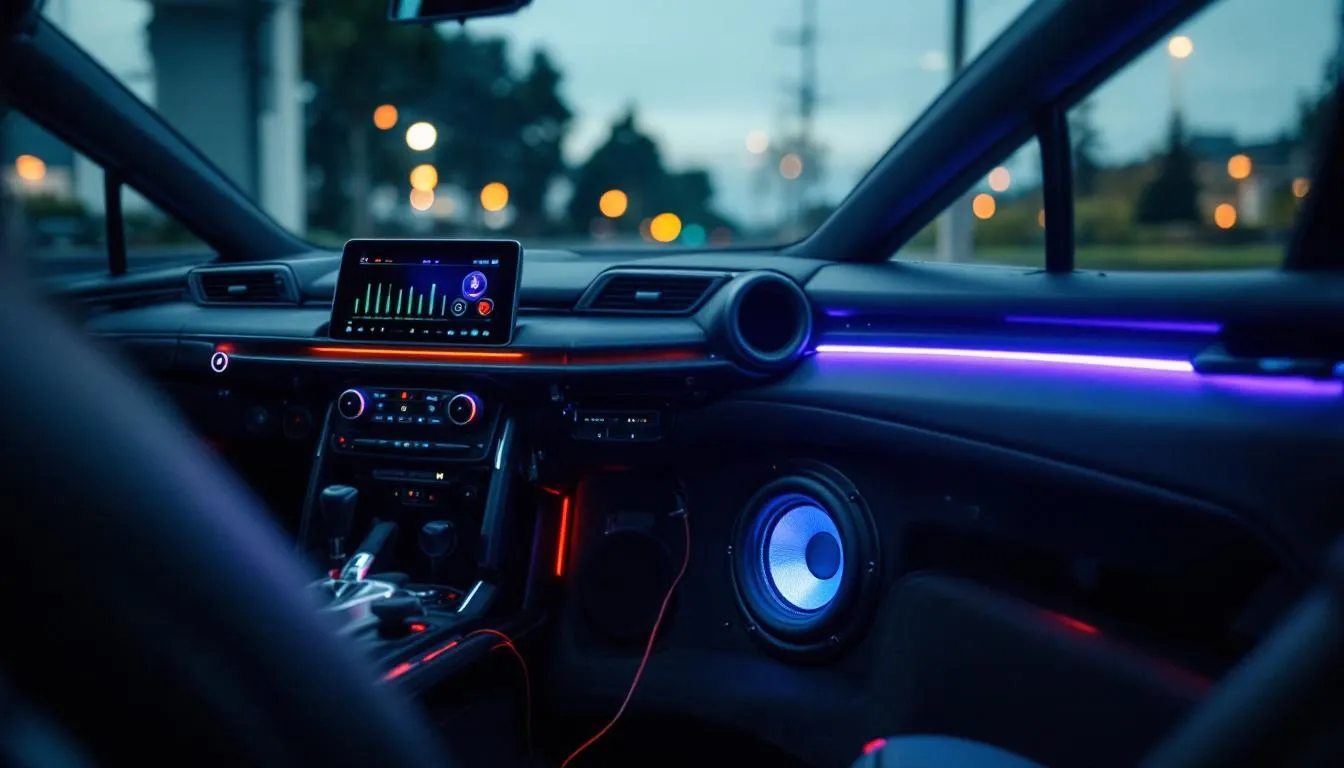
Upgrading your vehicle’s loudspeakers for cars represents one of the most cost-effective ways to transform your driving experience through improved sound quality and enhanced audio clarity. Whether you choose simple coaxial speakers for easy installation or sophisticated component systems for audiophile-level performance, quality speakers deliver immediate improvements in music reproduction, podcast clarity, and hands-free communication.
The key to successful speaker upgrades lies in matching car speakers and amplifiers to your specific needs, vehicle characteristics, and performance expectations. By understanding technical specifications, considering installation requirements, and planning for future system expansion, you can create an audio system that provides years of listening enjoyment while adding value to your vehicle.
Start your speaker upgrade journey by assessing your current system’s limitations and defining your performance goals. Measure your existing speaker openings, evaluate your listening preferences, and establish a realistic budget that considers both product costs and installation requirements. With proper planning and quality components, you can transform your car into a mobile concert hall that makes every drive more enjoyable.

